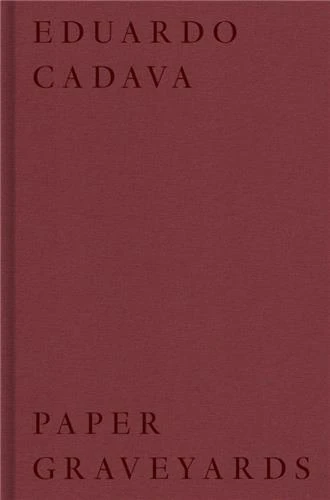Paper Graveyards
Par :Formats :
Actuellement indisponible
Cet article est actuellement indisponible, il ne peut pas être commandé sur notre site pour le moment. Nous vous invitons à vous inscrire à l'alerte disponibilité, vous recevrez un e-mail dès que cet ouvrage sera à nouveau disponible.
- Nombre de pages509
- PrésentationRelié
- FormatGrand Format
- Poids0.59 kg
- Dimensions15,0 cm × 23,1 cm × 4,3 cm
- ISBN978-0-262-04604-6
- EAN9780262046046
- Date de parution26/10/2021
- ÉditeurMIT Press (The)
Résumé
Paper Graveyards is neither a work of traditional art history nor is it literary criticism., It is not strictly a history of ideas either, notwithstanding its very obvious erudition. Rather, in drawing upon this assortment of : methods and approaches—and with extraordinary attention to language and style Cadava's writing examines the spectacular explosion of images during the last twenty years as a prompt to discuss not simply specific images but the role and place of these images in our everyday life.
Considering work by Félix Nadar, Roland Batches, Leon Golub, Nancy Spero, Fazal Sheikh, Susan Meiselas, and others, Cadava delineates different modes of reading that, taking their point of departure from the conviction that the past, the present, and the future are always bound together, provide us with a training manual. of sorts for understanding visual material ; . in the twenty-first century. These genet ously illustrated essays actively expand our literacy by reconstructing the networks of relations that inhabit the plural worlds of images, and create a genealogy of what we still call "an image," even when, with every day that passes, we perhaps understand less and less what this might mean.
Considering work by Félix Nadar, Roland Batches, Leon Golub, Nancy Spero, Fazal Sheikh, Susan Meiselas, and others, Cadava delineates different modes of reading that, taking their point of departure from the conviction that the past, the present, and the future are always bound together, provide us with a training manual. of sorts for understanding visual material ; . in the twenty-first century. These genet ously illustrated essays actively expand our literacy by reconstructing the networks of relations that inhabit the plural worlds of images, and create a genealogy of what we still call "an image," even when, with every day that passes, we perhaps understand less and less what this might mean.
Paper Graveyards is neither a work of traditional art history nor is it literary criticism., It is not strictly a history of ideas either, notwithstanding its very obvious erudition. Rather, in drawing upon this assortment of : methods and approaches—and with extraordinary attention to language and style Cadava's writing examines the spectacular explosion of images during the last twenty years as a prompt to discuss not simply specific images but the role and place of these images in our everyday life.
Considering work by Félix Nadar, Roland Batches, Leon Golub, Nancy Spero, Fazal Sheikh, Susan Meiselas, and others, Cadava delineates different modes of reading that, taking their point of departure from the conviction that the past, the present, and the future are always bound together, provide us with a training manual. of sorts for understanding visual material ; . in the twenty-first century. These genet ously illustrated essays actively expand our literacy by reconstructing the networks of relations that inhabit the plural worlds of images, and create a genealogy of what we still call "an image," even when, with every day that passes, we perhaps understand less and less what this might mean.
Considering work by Félix Nadar, Roland Batches, Leon Golub, Nancy Spero, Fazal Sheikh, Susan Meiselas, and others, Cadava delineates different modes of reading that, taking their point of departure from the conviction that the past, the present, and the future are always bound together, provide us with a training manual. of sorts for understanding visual material ; . in the twenty-first century. These genet ously illustrated essays actively expand our literacy by reconstructing the networks of relations that inhabit the plural worlds of images, and create a genealogy of what we still call "an image," even when, with every day that passes, we perhaps understand less and less what this might mean.


